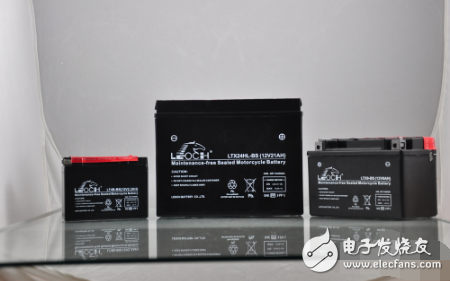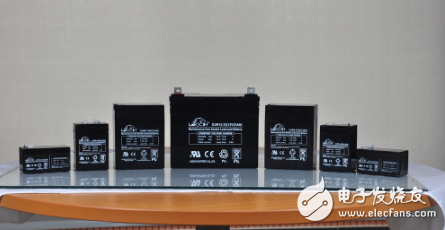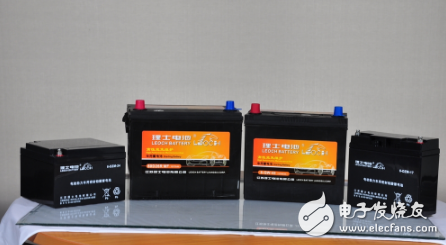A lead-acid battery (VRLA) is a battery whose electrode is mainly made of lead and its oxide, and the electrolyte is a sulfuric acid solution. When the lead-acid battery is discharged, the main component of the positive electrode is lead dioxide, and the main component of the negative electrode is lead. In the state of charge, the main components of the positive and negative electrodes are lead sulfate.
A single-lead lead-acid battery has a nominal voltage of 2.0V, can be discharged to 1.5V, and can be charged to 2.4V. In applications, 6 single-cell lead-acid batteries are often used in series to form a 12V lead-acid battery. There are also 24V, 36V, 48V and so on.
Structure and appearanceAccording to its structure, it can be divided into two types: single tank and integral tank. The single plastic tank is mainly used for fixed and traction batteries. The overall slots are mainly automotive and medium and small valve-regulated batteries. ABS plastic is easy to injection and has a simple process. The most common problem is warpage, followed by sink marks, decomposition materials, and the like. The warpage is mainly due to the high temperature of the mold, or the cooling time of the plastic groove and other products in the mold is too short; the flow marks are usually caused by poor mold discharge, low mold temperature and low injection pressure; the decomposition material is mainly due to The processing temperature is too high, the injection pressure is too large, and the recycled material is reused too many times. In addition, ABS battery slots still have defects such as insufficient injection volume, lack of meat, burrs, flash, whitening, corrugation, silver wire, bubbles, burns, color mixing, cracks, holes, and the like. These defects have a direct relationship with the process conditions such as injection temperature, pressure, speed and time during the process, which affects the appearance quality of the lead battery tank.
Impact resistanceWhen the battery tank is subjected to a certain external force at a certain temperature, whether it is cracked or not indicates its impact resistance. The impact resistance of the battery tank needs to be investigated in both normal temperature and low temperature conditions. ABS resin material has high impact strength and does not decrease rapidly at low temperature. Its impact resistance is related to the rubber content, particle size, grafting rate and dispersion state of the resin, and is related to the use environment. If the temperature is higher, the impact strength is greater.
The reason why the ABS resin material has good impact resistance can be attributed to the fact that the rubber particles absorb the external impact energy and inhibit the development of cracking. The normal temperature test of ABS battery cells of several companies in the United States and Japan proves that the impact resistance of ordinary materials is good. Flame-retardant materials, due to the different structure of the battery cells, products with different structures made of the same material, have poor impact resistance and occasionally cracks. If the battery is produced using this battery well, it is easy to cause problems such as liquid leakage. Therefore, the impact resistance of the ABS resin material has an important safety effect.
In addition, the occurrence of cracks in the battery cell has a great influence on the test temperature, the shape and structure of the groove, and the drop position. Therefore, the impact test must be carried out 24 hours after the injection molding, and must be kept at a temperature of 25 ± 2 ° C before the inspection. It can only be done after the time, and the wall thickness is different for different time. There are different standards for the ball drop height of the lead storage battery tanks of different uses and varieties.
Acid resistance
The lead battery tank is subjected to the corrosion of the sulfuric acid solution at a certain temperature for a certain period of time, and may be changed in appearance by the erosion, and the acid resistance is indicated by swelling, cracking, discoloration or the like. ABS resin materials have little effect on water, inorganic salts, alkalis and acids. It dissolves or forms an emulsion in ketones, aldehydes, and esters. Insoluble in most alcohols and hydrocarbon fluxes. The ABS battery tanks used include common materials and flame retardant materials of different manufacturers in the United States, Japan, etc. at normal temperature and high temperature test. After the specified test time, no discoloration, cracking and swelling occur. In the process of filling and charging, the battery temperature is high, and the battery tank must be required to have high corrosion resistance to improve its safety. The plastic groove with good corrosion resistance at normal temperature has cracked and peeled off at high temperature, which seriously affects the appearance and safety of the battery. Therefore, the acid resistance of the ABS battery cell resin material should be fully considered.
Quality change rateAfter the ABS plastic lead battery tank is immersed in a certain temperature of sulfuric acid solution for a certain period of time, its quality is slightly changed due to the attack of sulfuric acid. The ABS battery tanks used were tested by common materials and materials for different manufacturers, such as the United States and Japan. Some of the products met the 1.5% quality change rate standard of Japan, and slightly higher than the quality change rate of 1.0% in China. standard. The smaller the mass change rate of the ABS battery cell, the smaller the corrosion by acid and the better the stability.
Use and maintenance of lead-acid batteries
Lead-acid batteries are the main batteries used in electric vehicles. The batteries are not worn out but are damaged. They are not casually said. The battery charging performance plays an important role in the service life and performance of the battery. Pay attention to it.

The depth of discharge of the battery has a great influence on the cycle life of the battery. This is because the deeper the depth of discharge, the larger the amount of expansion and contraction of the electrode, and the more the active material of the positive electrode falls off, thereby losing the discharge characteristics and degrading the performance until the end of life. Therefore, the battery should be used to avoid deep discharge as much as possible, so as to be shallow and diligent, the general situation should be: the battery is best charged with a discharge depth of 50%-70%.
After the battery is discharged to the termination voltage, continued discharge (overdischarge) will seriously damage the battery. This is because irreversible sulfation is easily formed at this time, which makes the charge recovery ability worse or even impossible to repair. Therefore, the battery should be protected from overdischarge when used. "Undervoltage protection" is an effective measure. The “undervoltage protection†measure is controlled by the electric vehicle controller. However, since the electric appliances such as the electric vehicle instrument and indicator light are not controlled by the controller, the electric vehicle lock starts to use electricity once it is closed, although the current is small, If it is discharged for a long time, the battery will be over-discharged. Therefore, it is not allowed to unlock for a long time, and should be turned off immediately when not in use.

The charging current should be less than or equal to the charging current that the battery can accept. Otherwise, the excess current generated by overcharging will cause the electrolyzed water to be consumed too quickly and cause serious gassing. The long time will make charging very difficult. Therefore, it is necessary to prevent overcharging when charging. Chargers made by regular manufacturers ensure that the battery is not overcharged.
Lead-acid batteries are especially afraid of loss of electricity and discharge. If the battery is placed for 3-7 days, it will be permanently damaged. Therefore, please charge the battery as soon as possible after using it. For batteries that are not used for a long time, charge the battery once every 15 days to compensate for the loss of self-discharge when the battery is stored.
The battery runs during the hot season, and there is mainly a problem of overcharging. Therefore, in summer, the battery temperature should be reduced as much as possible to ensure good heat dissipation, to prevent charging after sun exposure, and to stay away from heat. In the case of low temperature, charging mainly suffers from poor charging acceptance and insufficient charging to cause the battery to lose power. In case of low temperature, anti-freezing measures should be taken, especially when charging, it should be placed in a warm environment, which is beneficial to ensure sufficient electricity, prevent irreversible sulfation, and prolong the service life of the battery.

Under normal circumstances, the battery life with a large depth of discharge is about 1 year, and the battery life with a depth of 50%-70% is about one and a half years. The battery produced by individual manufacturers can reach more than 2 years.
Uv Curving Glass,Tempered Glass Screen Protector,Film Cutting Machine,Uv Curing Protector Screen
Shenzhen TUOLI Electronic Technology Co., Ltd. , https://www.hydrogelprotectors.com